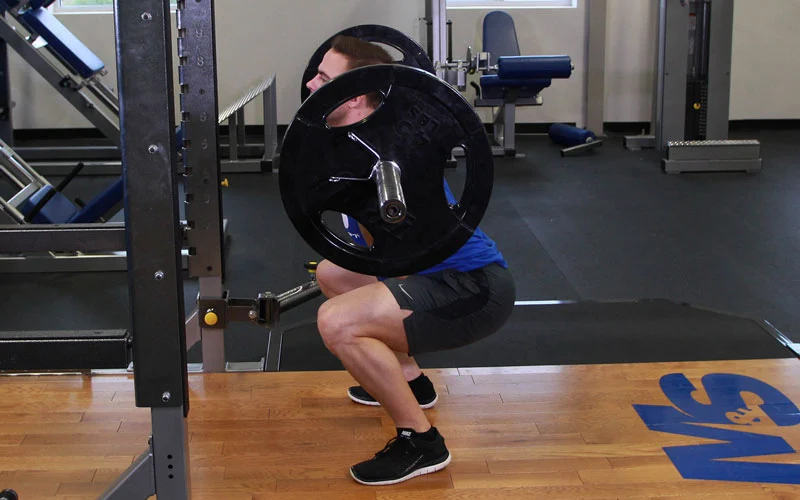
If you’re here, you’ve probably asked yourself: Do squats burn belly fat? Maybe you’ve seen fitness influencers showing off shredded abs after countless squat workouts, or perhaps you’ve been told that squats are the ultimate fat-burning exercise.
Well, here’s the truth: Squats don’t magically target belly fat.
But before you roll your eyes and leave, listen up. Squats can play a crucial role in getting rid of stubborn fat—when done right. They trigger a full-body metabolic response that burns calories, builds muscle, and boosts fat loss everywhere, including your midsection.
This isn’t just some gym bro opinion. It’s backed by science, biomechanics, and real-world results. Let’s break it down.
Squats and Belly Fat: What the Science Says
First, let’s get one thing clear: You can’t spot-reduce fat.
There’s no single exercise—squats, crunches, or even planks—that will directly burn belly fat. Your body decides where it loses fat based on genetics, hormones, and overall calorie balance.
But here’s where squats come in. They activate the largest muscle groups in your body—glutes, quads, hamstrings, and core. When you train big muscles, your body burns way more calories than smaller muscle exercises (like crunches).
A study published in the Journal of Strength and Conditioning Research found that compound movements like squats burn more fat and boost metabolism more effectively than isolated ab exercises.
This means squats aren’t about “melting belly fat” directly, but they create the perfect environment for total-body fat loss—which includes your midsection.
How Squats Help You Lose Belly Fat (Even If They Don’t Target It Directly)
1. Squats Burn More Calories Than You Think
Squats are not just a “leg day” exercise. They recruit multiple muscles at once, forcing your body to use more energy. The more energy (calories) your body burns, the more likely it is to tap into fat stores—including the fat around your belly.
2. Squats Trigger the Afterburn Effect
Ever heard of EPOC (Excess Post-Exercise Oxygen Consumption)? It’s what happens when your body continues to burn calories hours after a workout.
Heavy, intense squats spike EPOC levels, meaning you burn more fat even after you’ve left the gym. Compare that to traditional ab exercises, which burn calories only during the movement—squats win by a landslide.
3. Squats Build Muscle (Which Speeds Up Fat Loss)
The more muscle you have, the more calories you burn at rest. Muscle is metabolically active, meaning it burns calories just to exist.
When you add squats to your routine, you build muscle in your legs, glutes, and core. This raises your resting metabolic rate (RMR), helping you burn fat throughout the day—even when you’re sitting on the couch.
4. Squats Improve Insulin Sensitivity (Which Reduces Belly Fat Storage)
Belly fat is often linked to insulin resistance. When your body struggles to regulate blood sugar, it stores more fat around your midsection.
A study in the International Journal of Obesity found that strength training (especially lower-body movements like squats) improves insulin sensitivity, making it easier for your body to burn fat instead of storing it.
5. Squats Strengthen Your Core (Making Your Abs More Visible)
Even though squats aren’t a direct ab exercise, they engage your entire core—abs, obliques, and lower back.
A strong core helps tighten your midsection and improve posture, making belly fat less noticeable as you lose weight.
The Best Way to Use Squats for Fat Loss
Now that you know how squats help with belly fat loss, here’s how to maximize their effect:
1. Lift Heavy (But Smart)
Forget endless bodyweight squats. If you want real results, progressively overload—meaning you increase the weight over time. Aim for moderate to heavy weights (8-12 reps per set) to maximize fat burn and muscle gain.
2. Go Deep (Full Range of Motion)
Half-rep squats won’t cut it. Deep squats engage more muscles, which means more calories burned. Aim to go at least parallel or lower if mobility allows.
3. Combine Squats With Compound Movements
Squats alone won’t do all the work. Pair them with deadlifts, lunges, and presses to activate even more muscle groups and supercharge fat loss.
4. Add HIIT Squats for Maximum Burn
Want to take it up a notch? Mix jump squats, goblet squats, or kettlebell swings into a high-intensity interval training (HIIT) circuit to spike heart rate and torch fat fast.
5. Don’t Skip Diet (It’s 80% of the Game)
No amount of squats will save you from a bad diet. Cut out processed junk, eat protein-rich foods, and focus on whole, nutrient-dense meals to fuel your workouts.
Should You Do Squats Every Day for Belly Fat?
No. Recovery is just as important as training. Squats are a high-intensity movement, and overdoing them can lead to burnout or injury.
Instead, aim for 3-4 squat sessions per week, mixing in rest days and other forms of training like cardio and mobility work.
The Bottom Line: Squats Are Powerful, But Not Magic
So, do squats burn belly fat?
Not directly—but they help create the right conditions for fat loss by building muscle, increasing calorie burn, and improving metabolism.
If you combine squats with proper training, a solid diet, and a calorie deficit, belly fat won’t stand a chance.
But remember—there’s no shortcut.
Forget quick fixes. Commit to the long game, train hard, and your body will reward you with real, lasting results.
Now, get under that bar and start squatting.